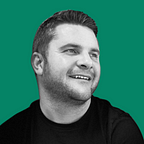Structuring Your Product Design Case Studies Using The STAR Method
Crafting a compelling product design case study is essential to showcase your skills and thought process effectively. One powerful framework to structure your case studies is the STAR Method: Situation, Task, Action, Result. Here’s how you can apply it:
🌟 Situation
Start by setting the scene:
- Problem Statement: What problem or opportunity were you addressing?
- Project Scope: Who were the key stakeholders and users? What were the constraints?
- Environment: What was the setting (company, team, market conditions)?
Example: “Our company noticed a significant drop in user engagement on our mobile app. The marketing team hypothesized that the user onboarding process was too complex and causing users to abandon the app early. I was tasked with redesigning the onboarding process to improve user retention.”
🎯 Task
Define your specific responsibilities and objectives:
- Your Role: What was your role in the project?
- Goals: What were you trying to achieve?
Example: “As the lead UX designer, my goal was to create a streamlined and intuitive onboarding experience that would reduce user drop-off rates by 20% within three months.”
✨ Action
Detail the steps you took:
- Research: How did you gather insights (user interviews, surveys, usability testing)?
- Ideation and Design: What was your design process (brainstorming, wireframes, prototypes, iterations)?
- Collaboration: Who did you work with (developers, product managers)?
- Tools and Methods: What tools and methodologies did you use?
Example: “I started by conducting user interviews to understand pain points in the current onboarding process. Based on the insights gathered, I created user personas and journey maps. I then sketched wireframes and developed several prototypes using Figma. We conducted usability tests on these prototypes and iterated based on user feedback. Throughout the process, I worked closely with the product manager to ensure alignment with business goals and collaborated with developers to address technical constraints.”
🏆 Result
Share the outcomes:
- Metrics: Provide quantitative data (improvements in user engagement, conversion rates).
- Feedback: Include qualitative feedback from users or stakeholders.
- Reflection: Reflect on what you learned and areas for future improvement.
Example: “The redesigned onboarding process led to a 25% increase in user retention within the first three months, surpassing our initial goal. User feedback highlighted the new process as significantly more user-friendly. The project not only improved engagement but also provided valuable insights into user behavior that informed future design decisions. This experience reinforced the importance of iterative testing and user-centered design.”
📌 Final Tips:
- Be Concise: Keep each section focused and to the point.
- Use Visuals: Include images of your wireframes, prototypes, and final designs.
- Be Honest: Acknowledge challenges and how you overcame them.
- Tailor to Audience: Customize your case study to the interests of your audience.
Using the STAR method ensures your product design case studies are clear, structured, and impactful. Share your journey and showcase the value you bring to the table!
Carl is a Talent Sourcer Building Design, Product & Engineering Teams. Before recruiting, he was a product designer working with many tech startups to design mobile apps. Carl is also the co-founder of a Meetup called Global UXD where he helps connect designers with each other and create new opportunities. Having completed Thinkful and DesignLab bootcamps before becoming a recruiter, he’s an expert at helping designers land their first design roles. Find Carl on carlwheatly.com and LinkedIn.
